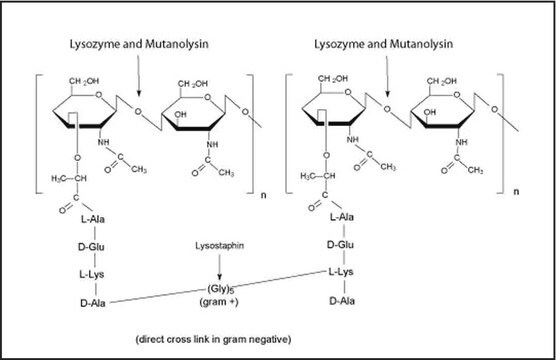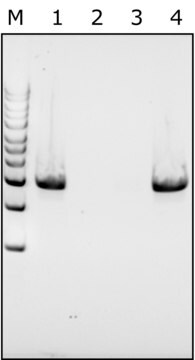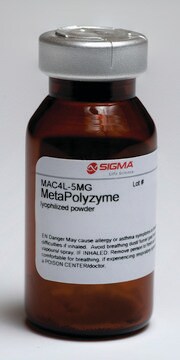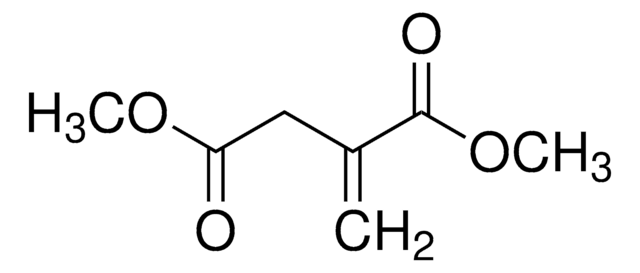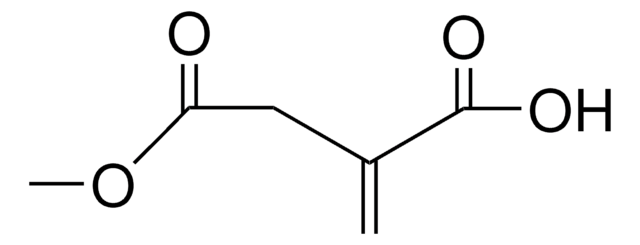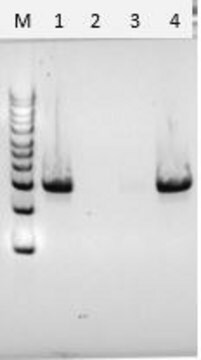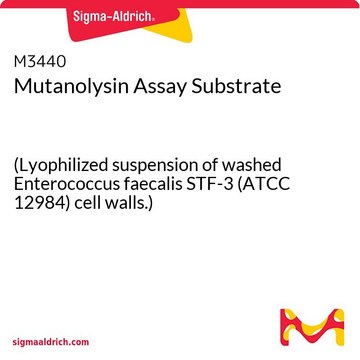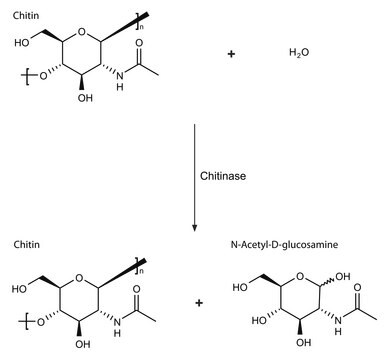SAE0091
Lysostaphin from Staphylococcus staphylolyticus
free of DNA contaminants, ≥500 units/mg protein, lyophilized powder, suitable for Microbiome research
Synonym(s):
Lysostaphin from Staphylococcus staphylolyticus, Glycyl-glycine Endopeptidase
About This Item
Recommended Products
product name
Lysostaphin from Staphylococcus staphylolyticus, free of DNA contaminants, suitable for Microbiome research, lyophilized powder, ≥500 units/mg protein
biological source
microbial (Staphylococcus staphylotyticus)
form
lyophilized powder
specific activity
≥500 units/mg protein
mol wt
27 kDa
feature
DNA free
shipped in
wet ice
storage temp.
−20°C
Looking for similar products? Visit Product Comparison Guide
Application
Lysostaphin is a zinc metalloenzyme isolated from a bacterial culture of Staphylococcus staphylolyticus. It has specific lytic action against other Staphylococcus species, including S. aureus.1,2 Lysostaphin has
hexosaminidase, amidase, and endopeptidase activities. It cleaves polyglycine crosslinks in the cellular wall which leads to cell lysis of Staphylococcus species, but not of other bacterial genera. [Pharmaceuticals 2010, 3(4), 1139-1161]
Lysostaphin is a single polypeptide chain of 246 amino acids, a molecular mass of 26,926 Da, isoelectric point of 9.5, (5) and an activity pH optimum of 7.5.(6)
Biochem/physiol Actions
pH Optimum for activity: ~7.5
Unit Definition
Physical form
Signal Word
Danger
Hazard Statements
Precautionary Statements
Hazard Classifications
Resp. Sens. 1
Storage Class Code
11 - Combustible Solids
WGK
WGK 3
Flash Point(F)
Not applicable
Flash Point(C)
Not applicable
Certificates of Analysis (COA)
Search for Certificates of Analysis (COA) by entering the products Lot/Batch Number. Lot and Batch Numbers can be found on a product’s label following the words ‘Lot’ or ‘Batch’.
Already Own This Product?
Find documentation for the products that you have recently purchased in the Document Library.
Customers Also Viewed
Articles
An overview of human microbiome research, workflow challenges, sequencing, library production, data analysis, and available microbiome reagents to support your research.
Our team of scientists has experience in all areas of research including Life Science, Material Science, Chemical Synthesis, Chromatography, Analytical and many others.
Contact Technical Service